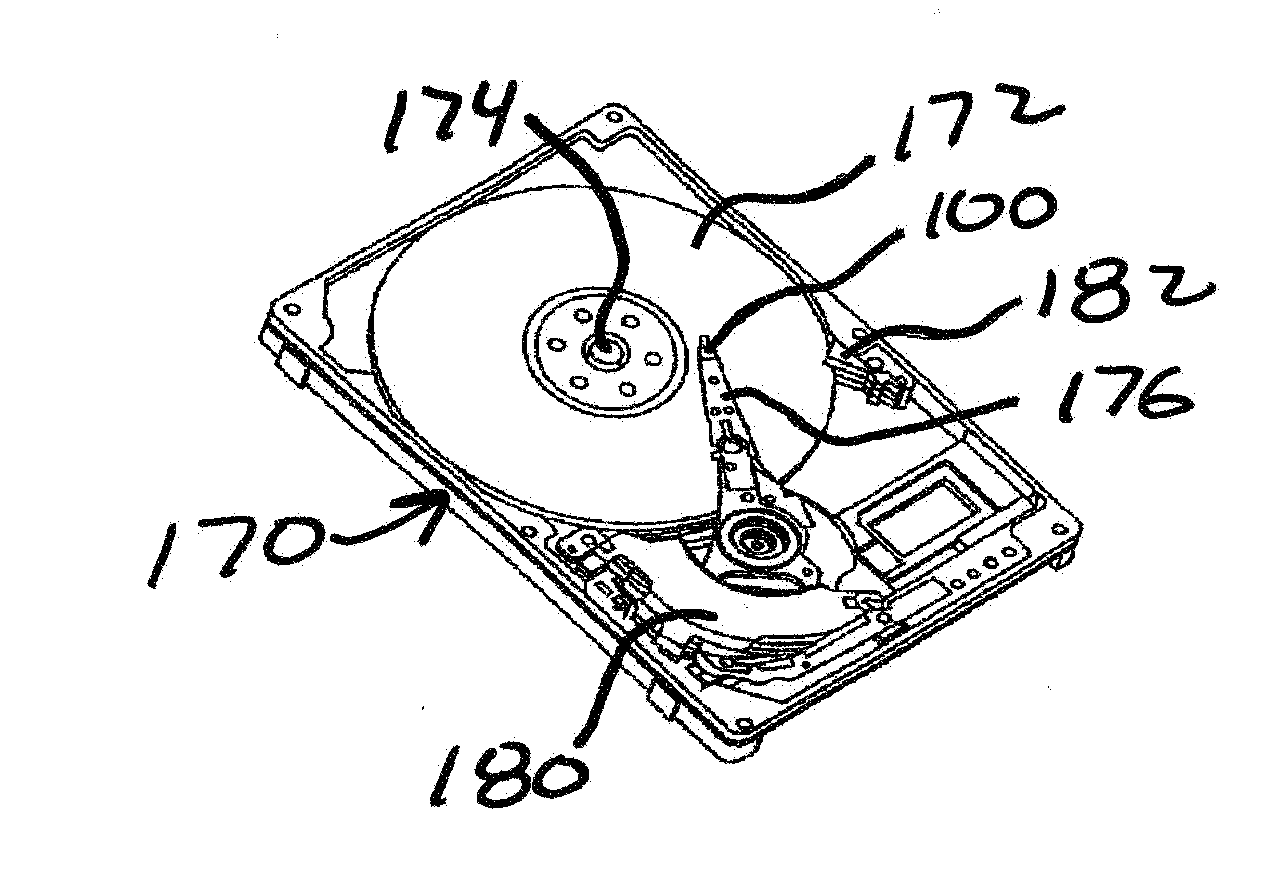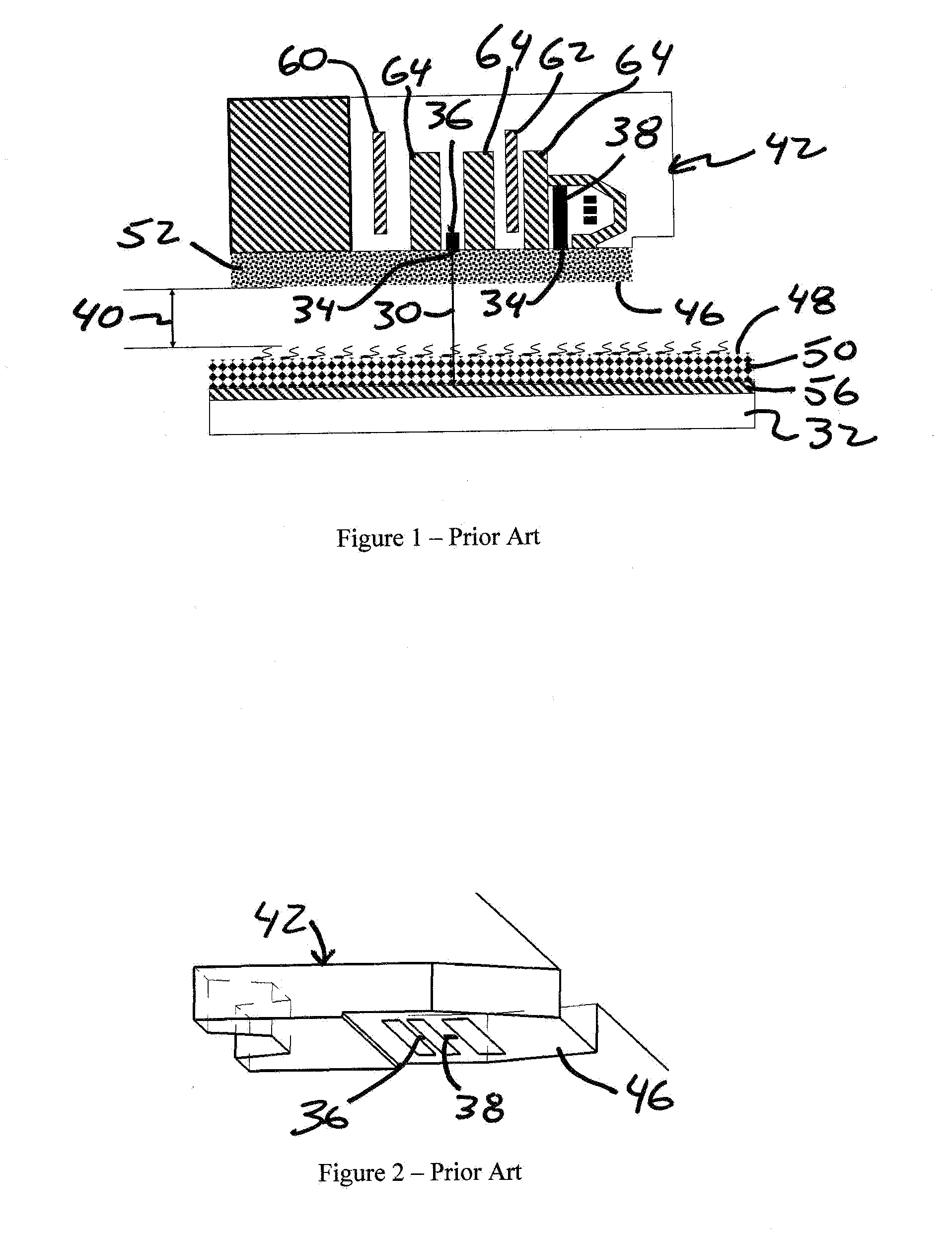Method and Apparatus for Reducing Head Media Spacing in a Disk Drive
a disk drive and media spacing technology, applied in the direction of maintaining the head carrier alignment, recording information storage, instruments, etc., can solve the problem of not preventing the actuated portion of the air bearing surface, and achieve the effect of reducing modulation, reducing interfacial forces, and reducing corrosion and wear protection
- Summary
- Abstract
- Description
- Claims
- Application Information
AI Technical Summary
Benefits of technology
Problems solved by technology
Method used
Image
Examples
Embodiment Construction
[0101]The systems and methods disclosed herein reduces the current HMS of about 100 Angstroms to about 65 Angstroms or less, without substantial carbon overcoat reductions or lubricant reduction. This reduction in HMS will enable the industry to achieve 1 Tbit / in2 with minor engineering design changes to the current air bearing and heater implementations.
[0102]While the prior art typically relied on the indiscriminate application of carbon overcoat to protect both sensitive and non-critical area, the embodiments disclosed herein selectively retain carbon overcoat in critical areas to protect the transducer areas against corrosion and wear.
[0103]FIGS. 9A and 9B illustrate an alternate read-write head 100 in accordance with an embodiment of the present invention. Thickness of the carbon overcoat 102 is reduced across the air bearing surface 104, except for protruding feature 106 protecting read-write sensors 110, 112. Since the requirement of wear durability is more stringent than cor...
PUM
| Property | Measurement | Unit |
|---|---|---|
| height | aaaaa | aaaaa |
| area | aaaaa | aaaaa |
| area | aaaaa | aaaaa |
Abstract
Description
Claims
Application Information
 Login to View More
Login to View More - R&D
- Intellectual Property
- Life Sciences
- Materials
- Tech Scout
- Unparalleled Data Quality
- Higher Quality Content
- 60% Fewer Hallucinations
Browse by: Latest US Patents, China's latest patents, Technical Efficacy Thesaurus, Application Domain, Technology Topic, Popular Technical Reports.
© 2025 PatSnap. All rights reserved.Legal|Privacy policy|Modern Slavery Act Transparency Statement|Sitemap|About US| Contact US: help@patsnap.com



